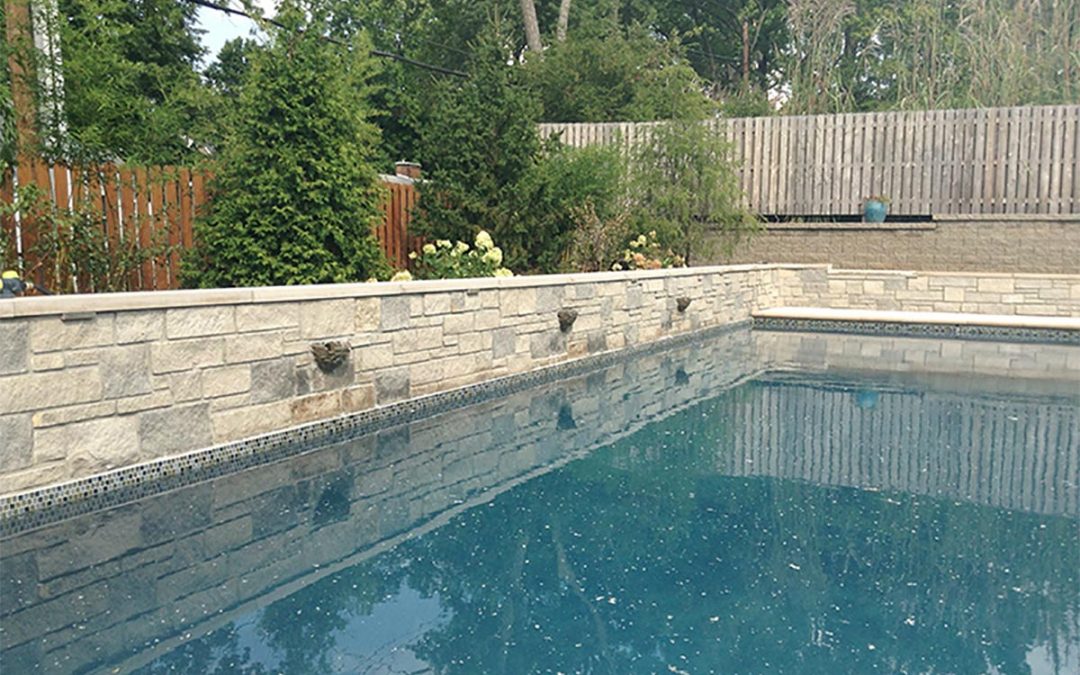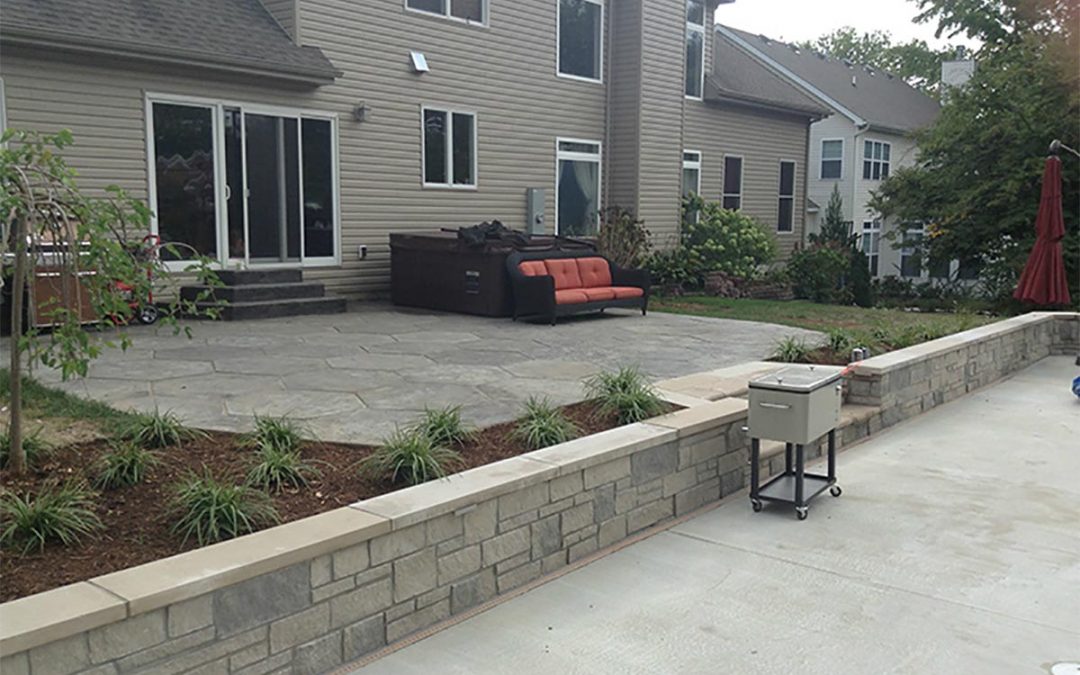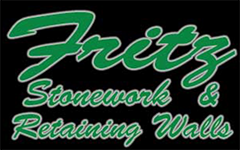
Oct 25, 2020 | landscape, landscaping, lanscape company, natural landscape, retaining wall
When it comes to landscaping, what comes to mind? Do you think of a beautiful garden full of bushes, flowers, concrete statues, and a small coy pond? All of those are great ideas to make your home look appealing. However, did you ever think about retaining walls? That’s probably the last thing you would ever think about, but they are a very important part of your garden. Retaining walls help keep your garden looking gorgeous by providing strength, preventing erosion, controlling rainwater runoff, and creating terraced levels for your garden beds.
Retaining walls can also make your property look effortlessly stylish no matter what style you choose. Therefore, it is a good thing there are so many options to choose from that can fit your budget and taste!
Concrete Retaining Walls
- White concrete creates a classic look and can make your green grass stand out. It is a simple choice but it is also elegant and would look great with a color scheme of neutrals, blues, and greens.
- Smooth concrete is a more modern choice and will give your home the edge you are looking for. It also creates a blank canvas so you can add as much greenery or flowers that you would like to, making your own garden sanctuary.
- Shotcrete rock face is simply used to describe sprayed concrete. Shotcrete rock face come in a multitude of colors ranging from standard grey to warm sandstone or clay colors that create a natural rock look.
- Concrete blocks is a bold choice when you need a strong solution. Concrete blocks prevent erosion on large properties; however, this can look unsightly so include levels and greenery to prevent this from happening.
Stone Retaining Walls
- Cut stone provides you with the opportunity to incorporate different types of stones to suit your taste. They are also last a long time so you do not have to worry about updating often.
- Round rocks add texture and shapes to your garden or backyard. They provide support to your steps, garden beds, and other features around your house.
- Sandstone is a good choice if you are wanting a more formal retaining wall. This is a classic choice that is not only practical but also serves as a feature piece wherever you use it.
- Grey blocks are a practical solution and can make a lasting impression. Use grey stone blocks to create steps leading up to your front door and you’ll create an impressive sight.
- Large blocks create a bold statement by using large, rough unstructured rocks. This natural look will easily blend in with your outdoor environment.
- Stone veneer is a great choice when you are on a budget and looking to create something more luxurious. This type of retaining wall uses stone placed over the top of other foundational materials such as brick.
Timber Retaining Walls
- Timber gives a nice, sleek look; however, if you’re looking for longevity then it might not be the choice for you. Naturally durable types of hardwood timber include tallow wood, ironbark, grey gum and forest red gum. These types of hardwood timber are naturally resistant to termites and can last up to 25 years.
- Timber sleepers are a rustic type of retaining wall. You will want to use older pieces of timber that has been treated or timber that has been stained or sanded to add character. It is a great choice for any home but especially for a country-style home.
Brick Retaining Walls
- White brick allows for you to add a little detail but still keep your color palette simple yet tasteful.
- Red brick is a classic choice and when adding white grout, you really make the bricks stand out. This will look great in any area of your home and can easily be complimented with greenery for a remarkable look.
Retaining walls play an important part in the landscape of your yard. There are many options to choose from and it can become overwhelming. Let the experts at Fritz Stonework & Retaining Walls help you decide which option is best for you and which one suits your style. Call us today to learn more about our retaining wall services and how we can help you.

Oct 14, 2020 | fall outdoors, fall patio, fire pit, firepit, fireplace, hardscape, home appeal, landscape, landscaping, lanscape company, masonry, outdoor fireplace, patio
For some people, the fall and winter seasons are a nice welcoming change to the hot summer temperatures. However, what comes along with fall and winter is weather that includes moisture, such as rain and snow. For as long as structures have been in existence, moisture has been the main cause for its deterioration. Moisture in all forms affect how well the building materials function.
The way masonry systems are designed should prevent the intrusion of moisture into the building’s interior. It should also keep the building’s structural components safe. If there is any structural break, then your building could be compromised. Masonry units that are made poorly are among the most common failure points. These include mortar joints, hairline cracks, parapet, and door and window details. Water can also come through by vapor condensation and can enter the structure as a result of poor work. The lack of proper drainage can exacerbate the impact of any type of moisture that makes its way through; therefore, creating major damage to the building.
Structural Problems
When unwelcome moisture seeps through, masonry units and mortar can crack. Thermal expansion can be a result when water gets into brick, concrete, and natural stone. Thermal expansion can cause the surface to peel, pop out, or flake off. This is also known as spalling, which is caused by too much moisture in the masonry that puts pressure outward. Spalling can ultimately result in large sections of the masonry to crumble and fall off, which will lead to structural damage.
Too much moisture cam also result in the wall rotting, which is very unaesthetic and an unhealthy condition. The insulation can also disintegrate along with staining of the interior finishes. Other effects may include the deterioration and/or corrosion of the wood/steel backup studs, cladding, ties and reinforcements. If this is left unattended to, the excess water can cause an increase and spread of additional structural degradation and complete structural failure.
Aesthetic Degradation
When there is excess moisture seeping through the masonry, efflorescence is a main problem. Efflorescence is a white, powdery, crystalline deposit that forms on the surfaces of masonry, stucco, and concrete. Efflorescence is caused when salt within the masonry unit itself has been dissolved due to too much moisture and has made its way to the surface of a porous material. It then forms the white, powdery, crystalline deposit as the water evaporates.
In order for efflorescence to happen, three problems must be present.
- There has to be water-soluble salts somewhere in the wall
- There must be enough moisture in the wall to render the salts into a soluble solution
- There must be a way for the soluble salts to move their way through to the surface so the moisture can evaporate, getting rid of the salts so they can crystallize causing efflorescence
Just because sulfates may be present in a masonry wall, it does not mean efflorescence will occur. The sulfates must be dissolved by water in order for it to happy. If there is no moisture then the sulfates will not find their way to the surface. However, there are certain conditions that will aggravate the possible creation of efflorescence. For example, if a block is exposed to cold, rainy weather during storage or if the structure has been poorly designed in regards to drainage and moisture control, then efflorescence is more likely to occur.
Health and Safety
Too much moisture can cause bacteria to grow which can create new odors or worsen current ones. The effects of growing bacteria can cause existing conditions to become worse, such as asthma and allergies. These bacteria have also been known to cause cancer and birth defects.
Managing moisture is a top priority when designing and building, especially here at Fritz Stonework & Retaining Walls. It is important to us that you and your family are safe from any potential harm. We work hard to make sure your masonry is up-to-par and lasts for many years to come. Contact us to today at (631) 861-1530 so we can help you create your masterpiece.


